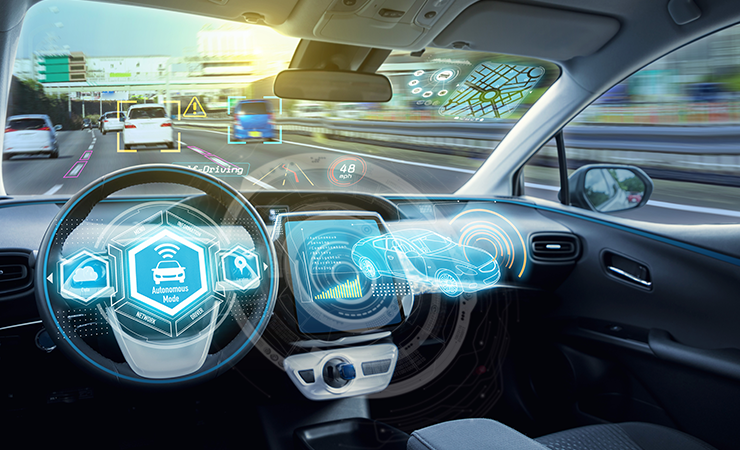Navigating the Future: Autonomous Driving, Insurance, and Regulatory Challenges
- Andriy Link

- Jul 1, 2024
- 3 min read
In the rapidly evolving landscape of autonomous driving, the intersections of technology, ethics, and regulation create a complex tapestry of considerations. As self-driving vehicles become more prevalent, questions about insurance, regulation, and ethical decision-making loom large. How do we balance innovation with safety? Can we trust AI to make split-second decisions? These are not just hypotheticals; they are the challenges that the autonomous driving, insurance, and regulatory industries must grapple with today.
New Regulations for an AI-driven Future
Recent years have witnessed a surge in the development and deployment of artificial intelligence (AI) technologies across various domains, including transportation. As autonomous driving systems become increasingly sophisticated, regulators worldwide are faced with the task of crafting policies that ensure both safety and innovation.
One significant aspect of these new regulations is the integration of AI ethics principles. These principles, as outlined by organizations like IEEE and the EU Commission, emphasize transparency, accountability, and fairness in AI systems. Transparency ensures that the decision-making process of AI algorithms is understandable to stakeholders, including regulators and consumers. Accountability holds developers and manufacturers responsible for the actions of their AI systems. Fairness seeks to mitigate biases that may inadvertently be encoded into AI algorithms.
Incorporating these principles into regulatory frameworks is essential for fostering public trust in autonomous driving technologies. Consumers need assurance that self-driving vehicles are designed with their safety and well-being in mind.
Furthermore, regulatory compliance can help mitigate potential liabilities for insurers, providing a clearer path forward for the insurance industry.
Ethical Dilemmas: Who Decides Who Dies?
One of the most challenging ethical dilemmas surrounding autonomous driving is the question of how AI systems should prioritize human lives in the event of unavoidable accidents. This scenario, often referred to as the "trolley problem," forces us to confront difficult decisions about whose safety should be prioritized in life-or-death situations.
AI-driven autonomous vehicles operate on probabilistic models, meaning they make decisions based on statistical probabilities rather than deterministic rules. In such systems, the parameter known as "temperature" plays a crucial role. This parameter controls the randomness of the AI's decisions, with higher temperatures leading to more randomness and lower temperatures favoring more deterministic outcomes.
In the context of autonomous driving, the temperature parameter becomes a critical factor in determining how AI systems navigate ethical dilemmas. Should the AI prioritize the safety of the vehicle's occupants, pedestrians, or other road users? The answer is not straightforward and requires careful consideration of societal values, legal frameworks, and moral philosophies.

Addressing the Technical Challenges
From a technical standpoint, integrating AI into autonomous driving introduces unique challenges. Unlike traditional rule-based systems, AI algorithms operate in a probabilistic manner, which inherently introduces uncertainty into decision-making processes.
The concept of "temperature" in AI refers to the level of randomness or uncertainty allowed in decision-making. In the context of autonomous driving, adjusting the temperature parameter can influence how AI systems navigate complex scenarios.

For example, a higher temperature may lead to more exploratory behavior, allowing the AI to consider a wider range of actions. Conversely, a lower temperature may result in more conservative decisions, prioritizing safety over exploration.
Balancing the need for exploration with the imperative for safety is a delicate task that requires continuous refinement of AI algorithms. Researchers and engineers must carefully calibrate temperature settings to ensure that autonomous vehicles can adapt to diverse driving conditions while minimizing the risk of accidents.
Collaboration for a Safer Future
Addressing the challenges of autonomous driving requires collaboration among stakeholders across industries. Insurance companies play a crucial role in incentivizing safe driving behaviors and mitigating risks associated with AI technologies. By leveraging telematics data and advanced analytics, insurers can develop more accurate risk models tailored to autonomous vehicles.
Moreover, collaboration between industry stakeholders and regulatory bodies is essential for establishing standards and best practices for AI-driven autonomous driving. Open dialogue and transparency can help build consensus around ethical guidelines and regulatory frameworks that promote safety, innovation, and social responsibility.
In conclusion, the convergence of autonomous driving, insurance, and regulatory industries presents both opportunities and challenges for society. By embracing AI ethics principles, addressing ethical dilemmas, tackling technical challenges, and fostering collaboration, we can navigate the complexities of this transformative technology and pave the way for a safer, more sustainable future of mobility.





Comments